 General
General  General Archive
General Archive  Top Cleveland Sports Figures, By the Numbers - #5
Top Cleveland Sports Figures, By the Numbers - #5
This is one installment in a team effort by The Cleveland Fan, highlighting the top local sports figures by jersey number. Please weigh in with your thoughts on the "Boards". As David Letterman would say, "For entertainment purposes only; please, no wagering"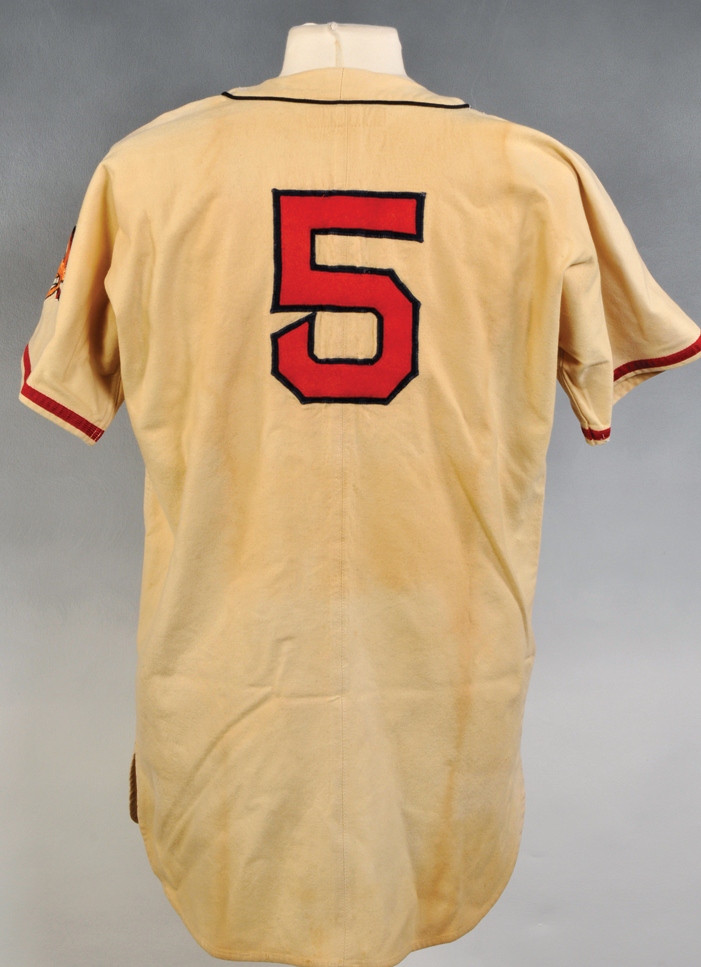 It’s a running joke within my circle of Cleveland sports fan friends that we are the only city whose great sports highlight videos are in black and white. That’s an exaggeration of course, but a slight one. What is beyond argument is that the glory years of Cleveland sports are increasingly ancient history. With that in mind, it will shock no one that we found ourselves back in the World War II era to select this city’s greatest ever #5.
It’s a running joke within my circle of Cleveland sports fan friends that we are the only city whose great sports highlight videos are in black and white. That’s an exaggeration of course, but a slight one. What is beyond argument is that the glory years of Cleveland sports are increasingly ancient history. With that in mind, it will shock no one that we found ourselves back in the World War II era to select this city’s greatest ever #5.
On November 20, 1941...which is to say, about two weeks before Pearl Harbor...the 24-year old shortstop of the Cleveland Indians dropped a letter in a mailbox back in his college town of Champaign, Illinois. It was addressed to Alva Bradley, the President of the Indians. Years later in his memoirs, the Hall-of-Famer admitted that he immediately had second thoughts, and if he could have reached down into the mailbox to retrieve it, he probably would have.
After all, it contained his rather foolish...borderline preposterous suggestion that Bradley name him, Lou Boudreau, a wet-behind-the-ears kid, two years out of college, the manager of the Cleveland Indians. "I look back and realize it was a very brash thing for me to do,” recalled the man who came to be nicknamed, among other things....
“The Boy Wonder”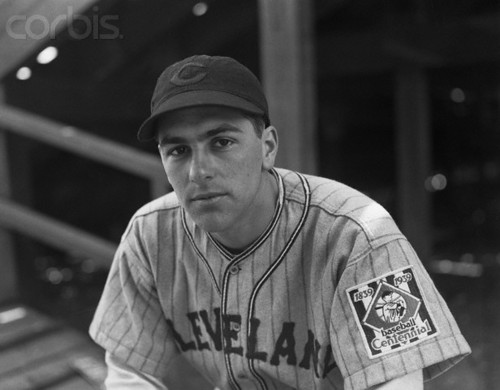 Three days later, Bradley arranged an audience for Boudreau with the Indians Board of Directors. Grilled by the board as to how he felt he could succeeed in the job with so little life experience, Boudreau countered that he had majored in physical education, and had planned to get into coaching someday anyway.
Three days later, Bradley arranged an audience for Boudreau with the Indians Board of Directors. Grilled by the board as to how he felt he could succeeed in the job with so little life experience, Boudreau countered that he had majored in physical education, and had planned to get into coaching someday anyway.
The young man's leadership qualities were unquestioned by the Indians brass. They knew he had led his high school basketball team to three straight Illinois state championship games, and then captained both baseball and basketball teams at the University of Illinois. The board interviewed two other candidates, and awarded the job to Boudreau, making him the youngest manager in major league history, a distinction he still holds today.
The move was not universally accepted by the veterans on the team, a group that had rebelled against Ossie Vitt, Boudreau’s predecessor in the Tribe dugout. The local writers were up in arms as well, suggesting the move could ruin the great young shortstop’s playing career, and mocking the Indians management in print.
Many of the players didn’t take to Handsome Lou’s rah-rah approach to motivation, referring to him as “Joe College” behind his back, and spitting tobacco juice on the inspirational posters he hung in the clubhouse. This despite the fact that Boudreau had already established himself as one of the promising young stars of the game, making the All-Star team in his first two seasons (1940-41) as a starter, and leading the AL in fielding percentage at shortstop both years.
The Best Shortstop in Baseball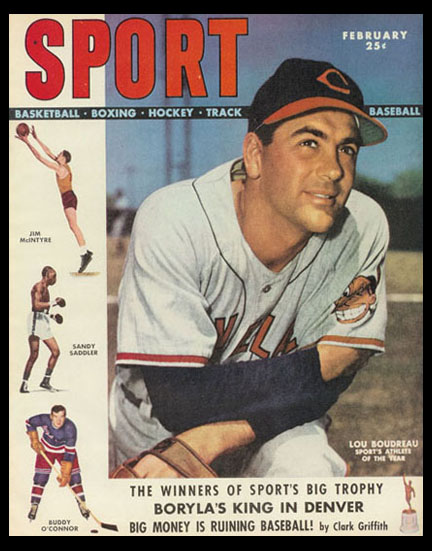 The Tribe under Boudreau would finish no higher than 3rd in the 8-team American League for his first six seasons (1942-47) at the helm, finishing over the .500 mark three times, and under it three times, with a high-water mark of 80-74 in 1947. Meanwhile though, the shortstop’s playing career exploded into stardom. I don’t want to dwell excessively on statistics here, but a quick summary is absolutely necessary to get the picture across. (Complete numbers here at B-R.)
The Tribe under Boudreau would finish no higher than 3rd in the 8-team American League for his first six seasons (1942-47) at the helm, finishing over the .500 mark three times, and under it three times, with a high-water mark of 80-74 in 1947. Meanwhile though, the shortstop’s playing career exploded into stardom. I don’t want to dwell excessively on statistics here, but a quick summary is absolutely necessary to get the picture across. (Complete numbers here at B-R.)
Boudreau was named an American League All-Star in seven of his first eight full years in the league; (1940-1948; the game was not played in 1945). He led the American League in fielding percentage eight times in nine years (1940-48). He won the American League batting title in 1944 with a .327 average, and led the AL in doubles three times, and in sacrifice hits twice. Boudreau finished in the top 10 in the MVP voting eight times, and won the MVP Award by a landslide in 1948, when he batted .355, with 18 HR and 106 RBI....all while managing the team to the World Series championship.
Stats like “Wins Above Replacement”, with all its statistical cousins, were unknown at the time, but Boudreau might have been impressed later in life if he ever learned of the WAR numbers he had put up during his playing career. In 1948, the AL MVP was 1st in the league in WAR at an outrageous 10.2, and also 1st in Defensive WAR, at 3.0. For comparative purposes, one active MLB player has posted a higher WAR for a season (Mike Trout, 2012, 10.7)
No...as you’ll see below, the city’s other notable #5’s don’t have comparable resumes.
Did I mention the World Series championship?
---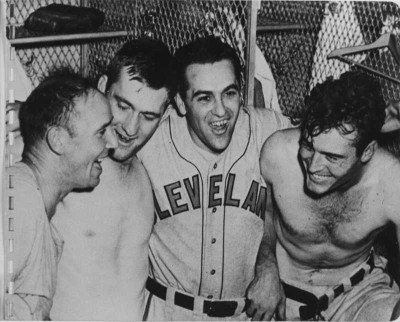 ''I have never known another year like the one we had in Cleveland in '48. 'Every day was like a final game of the World Series. And that year, Lou Boudreau was the greatest shortstop and leader I have ever seen.'' - Bill McKechnie, a veteran coach who worked on Boudreau’s staff that year.
''I have never known another year like the one we had in Cleveland in '48. 'Every day was like a final game of the World Series. And that year, Lou Boudreau was the greatest shortstop and leader I have ever seen.'' - Bill McKechnie, a veteran coach who worked on Boudreau’s staff that year.
---
Clutch
After finishing 96-58 in 1948, the Indians were tied with the Red Sox for 1st place in the AL, and had to travel to Fenway Park for a one-game playoff on October 4th. In that game, Boudreau went 4 for 4, with two home runs in an 8-3 Indians victory. He went on to gather six hits, including four doubles, in the Tribe’s six-game victory over the Boston Braves in the World Series.
An Innovator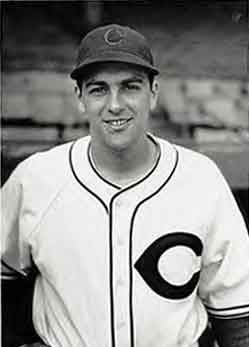 At his playing peak in the 40’s, Boudreau often found himself battling for the league lead in average, hits, doubles and other offensive numbers with two principal competitors...Joe DiMaggio and Ted Williams. When the Tribe’s player-manager hit .355 in 1948, it was Williams’ phenomenal season of .369 that kept Boudreau from his second batting title. And as a manager, it was Boudreau’s problem to figure out how to stop the Splendid Splinter. That quest prompted Boudreau to originate the “infield shift”.
At his playing peak in the 40’s, Boudreau often found himself battling for the league lead in average, hits, doubles and other offensive numbers with two principal competitors...Joe DiMaggio and Ted Williams. When the Tribe’s player-manager hit .355 in 1948, it was Williams’ phenomenal season of .369 that kept Boudreau from his second batting title. And as a manager, it was Boudreau’s problem to figure out how to stop the Splendid Splinter. That quest prompted Boudreau to originate the “infield shift”.
As Boudreau told the story, he was out at dinner one night with his coaches, and they were talking about how to stop Williams. Boudreau said to the group, “There's really no way to pitch to him successfully. Maybe we ought to think about playing him differently.” Boudreau got out a table napkin, charted all nine defensive positions on it, and started moving players around.
The resulting shift of three infielders to one side of the diamond was alternately called “The Williams Shift” or “The Boudreau Shift”, but it is used to this day. Boudreau later admitted that his shift was more of a psychological ploy than a tactical one. He also admitted there was never any evidence that Williams was bothered much by it either way.
---
"I remember in 1948, Lou said, `We're going to sink or swim with Feller.' I was having a rough season, and after he said that I won 10 of my last 12 games. He instilled a confidence in his players they never forgot." - Bob Feller
---
The Indians released Boudreau as player and manager after the 1950 season, and he went on to the Red Sox, first as a player (1951), then as player-manager (‘52) and finally as manager (‘53-’54). He became the first manager of the Kansas City Royals in 1955, until he was released in mid-season 1957.
Beloved Broadcaster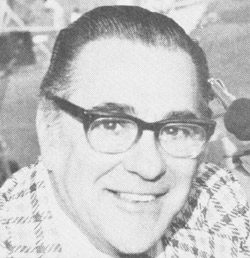 Boudreau returned to his hometown as a broadcaster with the Cubs beginning in 1958, and he had a long career doing both radio and TV work in Chicago for almost 30 years...with one brief interruption. After the 1959 season, Cubs manager Charlie Grimm had fallen out of favor with owner Phil Wrigley, so management proposed a “trade”, putting Grimm in the broadcast booth and bringing Boudreau into the dugout as manager. Boudreau managed the Cubs for the 1960 season, his last year as a major league manager, and returned to broadcasting soon thereafter.
Boudreau returned to his hometown as a broadcaster with the Cubs beginning in 1958, and he had a long career doing both radio and TV work in Chicago for almost 30 years...with one brief interruption. After the 1959 season, Cubs manager Charlie Grimm had fallen out of favor with owner Phil Wrigley, so management proposed a “trade”, putting Grimm in the broadcast booth and bringing Boudreau into the dugout as manager. Boudreau managed the Cubs for the 1960 season, his last year as a major league manager, and returned to broadcasting soon thereafter.
He developed a reputation as a calm and objective broadcaster and analyst, bringing to the audience the insights of a man who had both played and managed the game at the highest level, but in a way that was devoid of arrogance or ego. Reading the accounts of Chicago area writers and fans for this article, it became obvious to me how revered and appreciated he was, and still is, in his native Chicagoland.
Lou Boudreau was elected to the Baseball Hall of Fame in 1970, and his #5 was retired by the Cleveland Indians that same year. Boudreau died in 2001 at the age of 84.
---
Other Contenders
The search for worthy contenders to even speak about in the same sentence with the words “Lou Boudreau” was made more difficult by the fact that no Indians player has been permitted to wear the number for almost half a century. Consider also what that half-century of Cleveland baseball has looked like. Very few diamonds, and a whole lot of rough.
Our format for this series involves listing some of the also-rans, but when you look at the two Cavaliers guards and the one Browns quarterback profiled below, I’m sure you’ll appreciate just how much of a no-brainer #5 has been. Did I mention the World Series championship?
---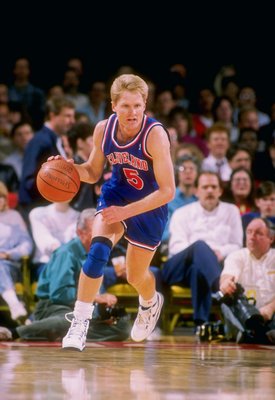 Steve Kerr - Cavaliers - Guard - 1989-1992
Steve Kerr - Cavaliers - Guard - 1989-1992
Kerr was a career bench player in the NBA, and essentially a 3-point shooting specialist. Just 30 of his 910 career NBA games were starts, but 20 of those were in one season in Cleveland. He played on a Final Four team at Arizona with Sean Elliott and Kenny Lofton, and was traded to the Cavs after being a 2nd round pick by Phoenix in 1988. He played three full seasons in Cleveland, including the 57-25 team in 1991-92 that went to the Eastern Conference finals against the Bulls. Kerr led the NBA in 3-point shooting percentage twice, and he remains the all-time NBA career leader in 3-point shooting percentage at .454. Kerr has five NBA Championship rings, and it scarcely needs be said that none of them came while he was wearing Wine and Gold. And so it goes.
---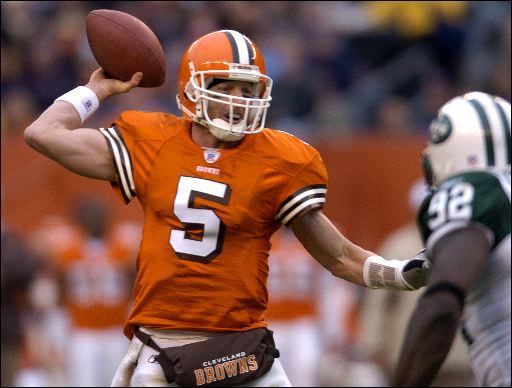 Jeff Garcia - Browns - QB - 2004.
Jeff Garcia - Browns - QB - 2004.
After four seasons as the starter with the 49ers, Garcia was shown the door along with coach Steve Mariucci, and he landed with the Browns for the 2004 season. He started the first 10 games of the season, but after a 3-2 start, the Browns went into a nine-game tailspin, and Garcia gave way to Kelly Holcomb and/or Luke McCown. There were highs - he tied the (unbreakable) NFL record for longest TD pass when he hit Andre Davis for 99 yards vs Cincinnati. And there were lows - he became just the fifth QB ever to post a 0.0 quarterback rating when he went 8 for 27, for 71 yards and 3 interceptions in a loss to the Cowboys. Along the way, Garcia responded publicly to rumors that he was gay, fueled by his former teammate, stand-up guy Terrell Owens. All of this was more than passing strange, considering that at the time, he was dating former Playboy Playmate Carmella Decesare, a woman now his wife, and the mother of their four children.
---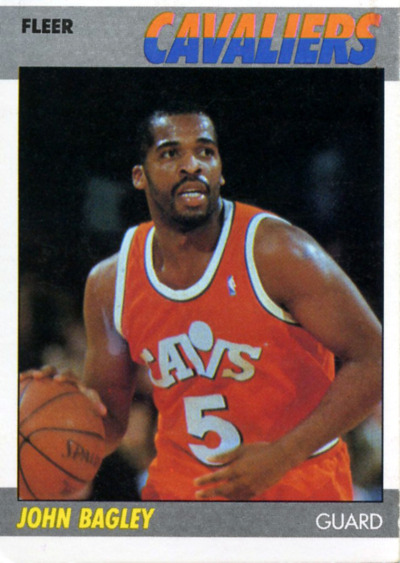 John Bagley - Cavaliers - Guard - 1982-1987
John Bagley - Cavaliers - Guard - 1982-1987
“Bags” was the 12th overall pick of the 1982 NBA Draft out of Boston College, where he was named Big East Player of the Year as a senior. He played his first five seasons in Cleveland, becoming the Cavs’ regular starter at point guard in his third year. In his five seasons in Cleveland (during the World B. Free and Phil Hubbard years) the Cavs failed to play .500 ball, and made the playoffs just once. In that year (36-46 in 1984-85) however, the Cavs played the Larry Bird-led Celtics very tough in the first round best-of-5 series, losing three games by a total of seven points. I still recall a crucial, and utterly bogus, late-game offensive foul call that went against Bagley in Game 4 that flipped the momentum to the Celtics...the kind of horrible call that the Celtics still get to this day in tight situations. Bitter? Not this guy. Not 30 years out. Nah.
---
- NBA Announces 2013-2014 Schedule
- Browns Ink Sharknado
- Sharknado A No-Show For Rookie Camp
- Trent Richardson Out Until Training Camp
- Browns Sign Brandon Jackson
- Carrasco Suspended Eight Games
- Browns Add to Wide Receiver Depth with David Nelson
- Browns Need to Learn from Past Draft Mistakes
- Browns Release Chris Gocong and Usama Young
- Browns Missing on Grimes Disappointing, But Not The End
The TCF Forums
- Chris Grant's first 3 drafts
Kingpin74 (Tuesday, January 21 2014 10:13 AM) - The 2014 Offseason Thread
googleeph2 (Tuesday, January 21 2014 9:36 AM) - 2015 Recruiting
furls (Tuesday, January 21 2014 6:57 AM) - Mike Brown
YahooFanChicago (Monday, January 20 2014 11:15 PM) - Movies coming out
HoodooMan (Monday, January 20 2014 9:34 PM) - 2014 Hoops Hockey Hijinx
jpd1224 (Monday, January 20 2014 4:44 PM) - 2014 Recruiting
jclvd_23 (Monday, January 20 2014 2:26 PM) - Wish List - #4 Pick
Hikohadon (Monday, January 20 2014 1:26 PM) - Official- Browns Coach Search/Rumors
OldDawg (Sunday, January 19 2014 6:48 PM) - #1 overall pick Anthony Bennett
TouchEmAllTime (Sunday, January 19 2014 1:28 PM)


